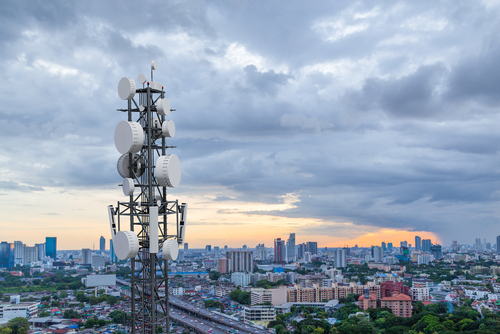what is a safe distance from a cell tower are a brand new type of antenna that's being utilized by wireless companies to provide internet services. They're more capable than 4g towers, and are larger and more powerful.
Cities are increasingly worried that these towers could be harmful to their residents. The concerns are related to privacy, health and aesthetic concerns.
They're Bigger
With 5G, the speed that radio waves travel through is higher than 4G, which means it needs more towers in order to transmit data. This increases the amount of radiation that can be released into our environment.
This is a big concern for HOA communities and business owners, real property investors, and others concerned about adverse health effects. They worry that adding more 5G towers will lower property values and negatively impact public health.
The only way to solve this issue is to alter the way we communicate - by using WiFi instead of conventional mobile networks. This isn't going to happen overnight however it will eventually happen.
How will what is a safe distance from a cell tower be achieved? How can we improve the security of our cell towers? The answer lies in the technology inside of a cell tower , which is known as small cells.
They're more expensive
If you're in the city, you've likely noticed large towers of cellular equipment that are atop masts and buildings. These are cell towers with 4G and they're used to provide wireless networks to the surrounding areas.
what is a safe distance from a 5g cell tower between 50 and 200 feet talland are made to blend into the environment to reduce the visual impact. As opposed to 4G, 5G technology requires more dense tower coverage in order to provide coverage across a wide area.
The dense cell sites could be difficult to maintain as they need to be constantly connected and capable of offering speedy speeds. In the end, they're more costly than other types of towers.
If you're a tower operator or the operator of a mobile phone network, it's sensible to upgrade your existing towers to 5G, in anticipation of the arrival of new technologies to the market. Incorporating these latest technologies into existing sites can help improve the functionality of the site and ultimately increase revenue for you.
They're even more deadly
5g Towers: What's the Problem?
One of the most significant problems with 5G towers is that they emit more radiation than other towers. This is due to the fact that they have to be placed in a more dense manner over an area in order to guarantee coverage.
The radio waves emitted from cell phone towers don't have enough energy to damage DNA directly, or even heat tissues in the body, but they do break down chemical bonds in DNA, which could cause cell damage and even cancer.
This makes people worried that living in close proximity to the 5G tower could cause negative health effects.

The reason is that 5g towers are more likely to be situated near to schools and homes in areas where they transmit radio frequency waves all the time. This means they'll be closer to you than ever before and the likelihood is higher that radiation from them is absorbed by your body.
They're not necessary
5G networks use a new part of the radio spectrum to transmit data- these are known as millimeter wave. They are much smaller than traditional radio waves at just 1-10mm in length. They are more frequent and can transmit more energy.
To provide the high-speed speed and low latency that 5G promises, it's necessary to have a huge array of mobile towers. This will require a large number of cell masts to cover cities, roads as well as business districts, colleges, and even farms.
But there are other ways to deliver fast internet service in highly-populated areas. One possibility is to construct small cell towers which are distributed in a dense manner to fill in gaps in coverage.
However, the biggest concern is where these tiny cells will go and the impact they'll have on residents. Local governments and residents are trying to find ways to block these installations or prevent them from taking place in their community.
